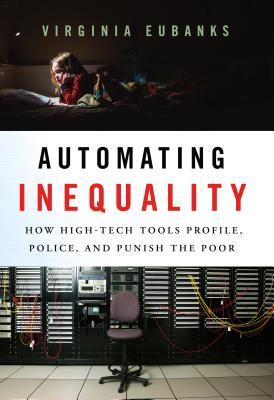What do you think?
Rate this book


260 pages, Hardcover
First published January 23, 2018
If among you, one of your brothers should become poor, in any of your towns within your land that the Lord your God is giving you, you shall not harden your heart or shut your hand against your poor brother, but you shall open your hand to him and lend him sufficient for his need, whatever it may be ‚Ä� For the poor you will always have with you in the land. Therefore I command you, ‚ÄòYou shall open wide your hand to your brother, to the needy and to the poor, in your land.‚Ä� - (Deuteronomy 15:7-11)
The law, it its majestic equality, forbids the rich as well as the poor to sleep under bridges, to beg in the streets, and to steal bread. -- Anatole FranceThe poorhouse. These days, it’s common parlance for extreme financial misfortune. Someone who has had a particularly bad fiscal spell could be said to be heading to the poorhouse. These days, we do not have literal, brick and mortar poorhouses. Those were usually fetid places, ill-maintained, offering meager shelter and food to the detritus of society, the poor, ill, elderly, and disabled, often requiring labor in return. These days, we have something new.
America’s poor and working-class people have long been subject to invasive surveillance, midnight raids, and punitive public policy that increase the stigma and hardship of poverty. During the nineteenth century, they were quarantined in county poorhouses. During the twentieth century they were investigated by caseworkers, treated like criminals on trial. Today we have forged a digital poorhouse from databases, matched algorithms and statistical risk models. It promises to eclipse the reach and repercussions of everything that came before.The most famous poorhouse resident in literature is one Oliver Twist. In the novel of that name, Dickens intended to highlight the inhumanity of the . The world of poverty he described was, while literarily thrilling, a horrifying exposé of man’s cruelty to man. Poorhouses found a home in the USA as well. The first poorhouse in the city of my current residence was established in 1863. In my erstwhile lifelong home, New York, an 1824 law directed the counties of the state to erect poorhouses. Residents could be required to do whatever work the superintendent demanded. Any resistance resulted in being kicked out. Among other sources for the poorhouse population, children younger than 15 caught begging could be legally remanded there until the person in charge of the poorhouse let them out. There were certainly poorhouses in NY earlier than that. The first poorhouse in the USA was in Boston, in 1662.

For all their high-tech polish, our modern systems of poverty management‚Äîautomated decision-making, data mining, and predictive analytics‚Äîretain a remarkable kinship with the poorhouses of the past. Our new digital tools spring from punitive, moralistic views of poverty and create a system of high-tech containment and investigation that I call the digital poorhouse. The digital poorhouse deters the poor from accessing public resources; polices their labor, spending, sexuality, and parenting; tries to predict their future behavior; and punishes and criminalizes those who do not comply with its dictates. In the process, it creates ever-finer moral distinctions between the ‚Äúdeserving‚Ä� and ‚Äúundeserving‚Ä� poor, categorizations that rationalize our national failure to care for one another.She takes two approaches. First is tracking the history of how the poor have been treated, noting the Dickensian era preference for punishing the poor overtly, by shunting them into miserable institutions, if providing any aid at all, then a revolutionary approach called Scientific Charity, which employed caseworkers applying the methodology of police work in examining the merits of a person‚Äôs application for aid,
As Mary Richmond wrote in Social Diagnosis, her 1917 textbook on casework procedures, ‚Äúthe reliability of the evidence on which [caseworkers] base their decisions should be no less rigidly scrutinized than is that of legal evidence by opposing counsel.‚Ä� Scientific charity treated the poor as criminal defendants by default.the reversal of reliance on private charity with the New Deal, the paring back of benefits in the 1970s, beginning the use of computer technology to exclude applicants, and sundry mechanisms being used today.
poverty is not an island; it is a borderland. There’s quite a lot of movement in the economic fringes, especially across the fuzzy boundary between the poor and the working class. Those who live in the economic borderlands are pitted against one another by policy that squeezes every possible dime from the wallets of the working class at the same time that it cuts social programs for the poor and absolves the professional middle class and wealthy of their social obligations. - [see recent tax cuts for the 1%]As the powers in Washington, and in many of our states, seek to dim the lights of our shining city on a hill, it will be up to those who are not wealthy or connected, those who work for low wages, those who are jobless, those who earn, while knowing that a layoff could happen any day, those who can see through the porous barriers between the middle class, the working poor, and the distraught, to comprehend and act on the need to join forces in order to rekindle that flame. As Eubanks points out, and as you probably already know, in your heart of hearts
…systems designed for the poor will eventually be used on everyone.It’s enough to enrage and/or depress Dickens.
Policing is broader than law enforcement: it includes all the process by which we maintain order, regulate lives, and press young people into boxes so they will fit our unjust society
The very existance of a social safety net is premised on an agreement to share the social costs of uncertainity